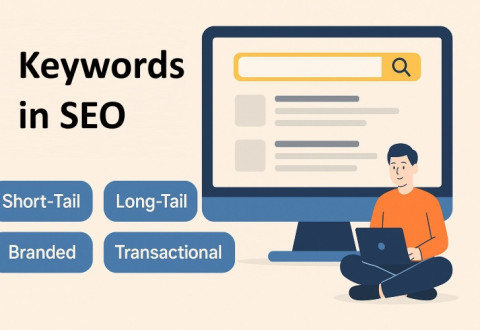Understanding different types of keywords is fundamental for SEO success. Keywords serve as bridges between what people search for and the content you provide. While SEO involves more than keywords alone, they help search engines understand your content’s purpose and determine which search queries it should rank for.
Various keywords serve distinct purposes throughout the marketing funnel. Short-tail keywords build awareness, while long-tail terms drive conversions. Informational keywords establish authority, transactional keywords generate sales. This comprehensive guide explores keyword categorization by length, role, search intent, and target audience.
We’ll cover short-tail, medium-tail, and long-tail keywords, plus primary, secondary, and semantic variations. You’ll learn about informational, navigational, commercial, and transactional search intents. We’ll also explore specialized categories like branded, local, and customer-defining keywords.
By understanding these keyword types, you’ll create more targeted content that serves specific user needs. Whether you’re building brand awareness or driving immediate conversions, choosing the right keyword mix is essential for achieving your SEO goals and growing your business through strategic search optimization.
What are SEO Keywords?

SEO keywords are words or phrases added to online content to improve search engine rankings for those terms. They represent what your target audience types into search engines when seeking information, products, or services related to your business.
Keywords connect user intent with your content. When someone searches for specific terms, optimized content can appear in search results, potentially earning new visitors and customers. Keywords are discovered through research and chosen based on search volume, competition, and commercial intent.
Most SEO activities stem from keyword strategy, including content creation, on-page optimization, and link building. Understanding different keyword types helps create targeted content serving specific user needs throughout their customer journey.
| Keyword Category | Purpose | Example | Best Use Case |
| By Length | Targeting based on specificity | “shoes” vs “waterproof hiking boots for women” | Broad awareness vs specific targeting |
| By Role | Content structure organization | Primary, secondary, semantic keywords | Page optimization strategy |
| By Intent | Matching user search goals | Informational, transactional, commercial | Content type planning |
| By Target | Audience-specific optimization | Local, branded, customer-defining | Specialized targeting |
Keyword Types Based on Length
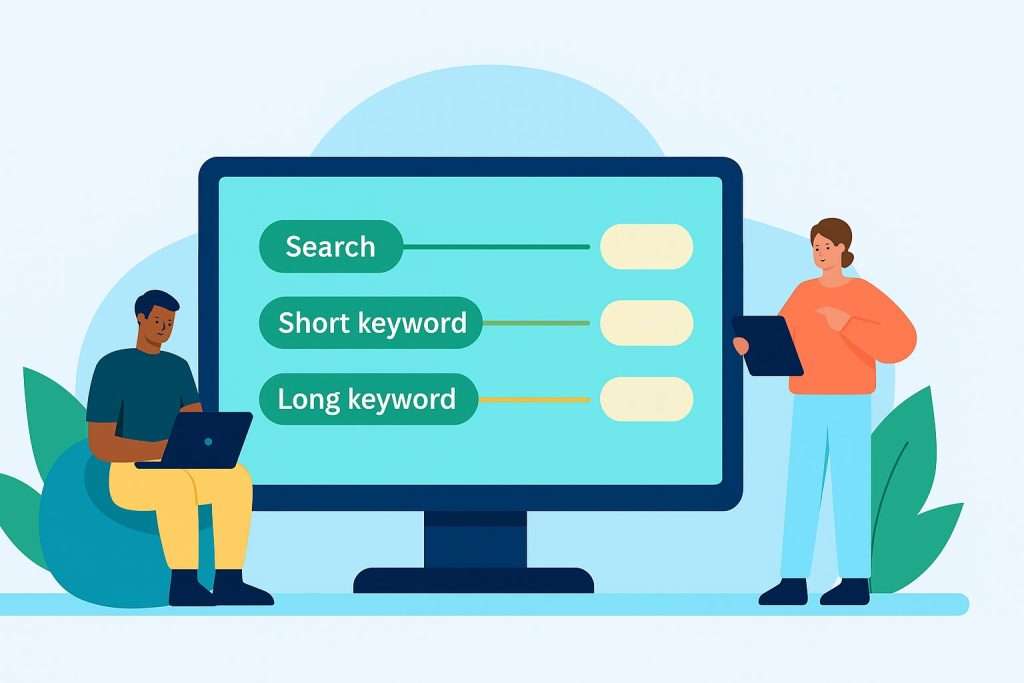
Keywords categorized by length correlate with specificity, competition level, and search volume. This classification helps SEO professionals balance reach and relevance.
Short-Tail Keywords
Short-tail keywords are brief phrases with one to two words representing broad topics. Examples include “laptops,” “insurance,” or “recipes.” These terms attract massive search volumes but face intense competition from established brands.
Search results for short-tail keywords are often dominated by big industry names with strong domain authority. The lack of specificity means unclear user intent and typically lower conversion rates. Users searching “shoes” could want running shoes, dress shoes, or shoe repair services.
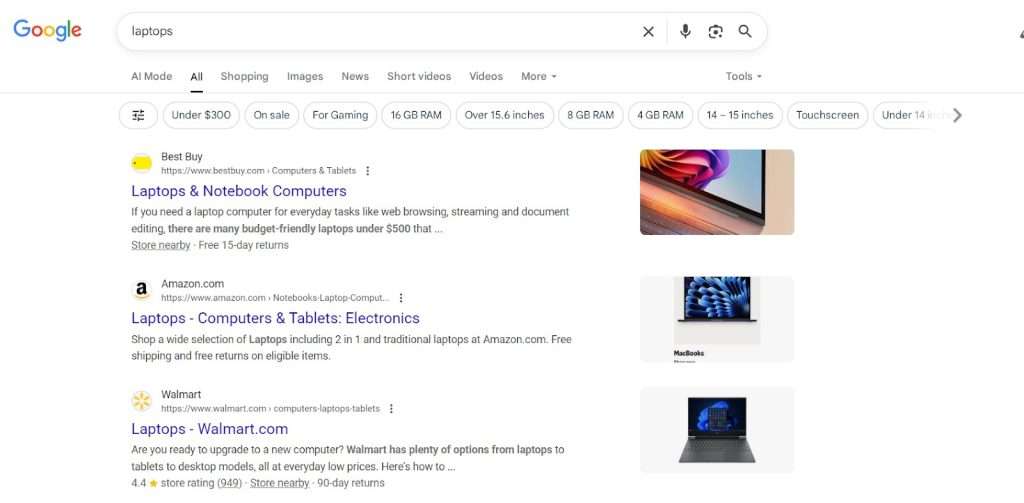
Short-tail keywords work best for businesses with high domain authority or comprehensive pillar pages covering broad topics thoroughly. They’re valuable for building topical authority and brand awareness, though ranking success requires significant resources and established online presence.
These keywords serve as entry points into your content ecosystem. While they may not convert immediately, they introduce users to your brand and can guide them toward more specific content through strategic internal linking.
Medium-Tail Keywords
Medium-tail keywords contain three to four words, bridging short-tail and long-tail terms. Examples include “running shoes women,” “digital marketing agency,” or “healthy breakfast recipes.” They offer decent search volume while being more specific than broad head terms.
These keywords are less competitive than short-tail terms while maintaining substantial search volume. They’re ideal for businesses with mid-level domain authority or those creating authoritative content with quality internal linking.
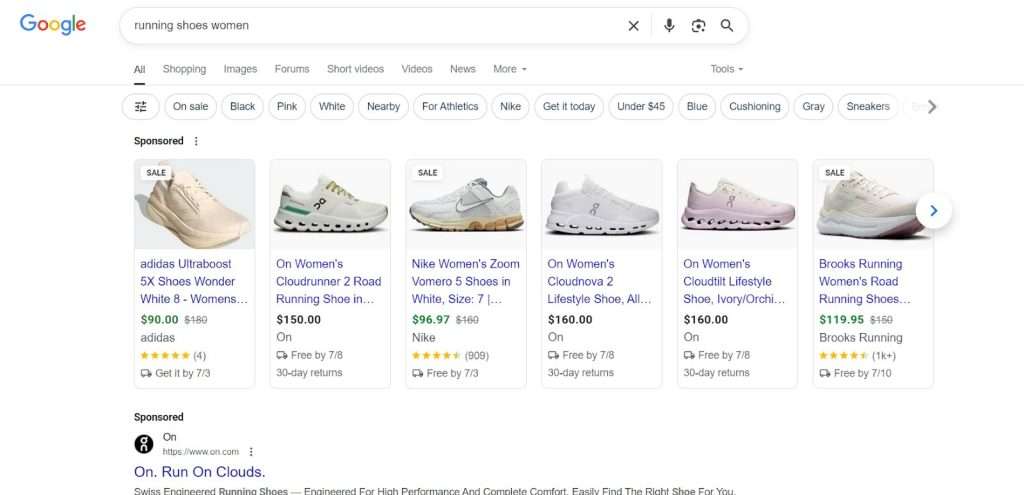
Medium-tail keywords often represent users beyond initial awareness seeking more specific information. This increased intent typically translates to better conversion rates compared to short-tail keywords while capturing broader audiences than long-tail terms.
Focus on creating comprehensive content addressing the core topic while naturally incorporating related terms and concepts when targeting medium-tail keywords.
Long-Tail Keywords
Long-tail keywords are specific search terms with five or more words showing clearer search intent. Examples include “best waterproof hiking boots for wide feet” or “how to start dropshipping business 2025.” Individual long-tail keywords have lower search volumes but collectively represent significant search portions.
These keywords demonstrate clear user intent, making them valuable for conversion-focused content. Someone searching specific long-tail terms knows exactly what they want, making them more likely to engage and convert.
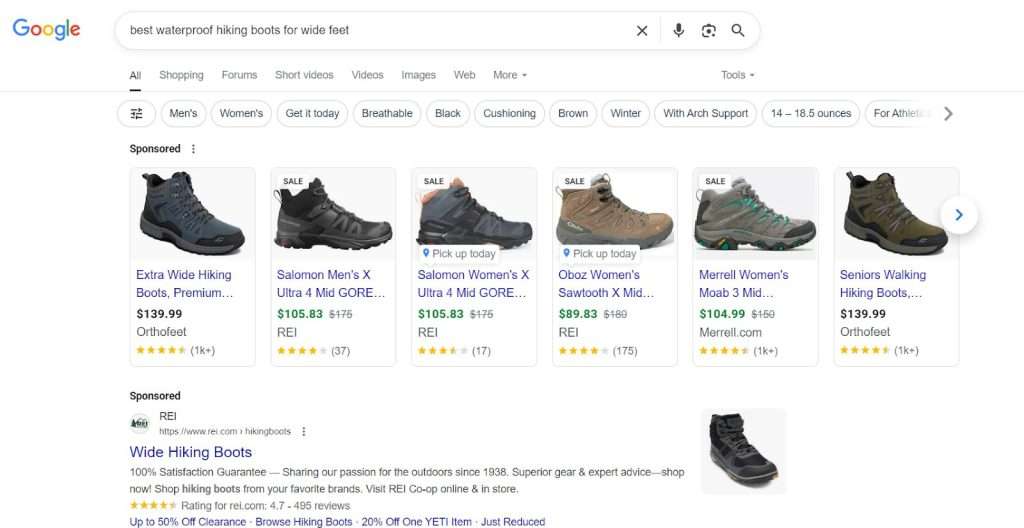
Long-tail keywords are easier to rank for due to lower competition. They align with voice search trends and natural language processing advances. As users become comfortable with conversational search, long-tail optimization becomes increasingly important.
The strategy involves targeting multiple long-tail keywords that collectively drive substantial traffic while being easier to rank for than competitive broad terms.
Types of Keywords by Role
Keywords serve different functions within content structure and SEO strategy. Understanding these roles helps create organized, effective content.
Primary/Focus Keywords
Primary keywords represent the main topic a specific page aims to rank for. Each page should focus on one primary keyword to avoid cannibalization and maintain clear topical focus.
Your primary keyword should appear strategically in URL, title tag, H1 heading, meta description, and first paragraph. Modern SEO requires comprehensive topic coverage rather than keyword stuffing, so focus on creating valuable content thoroughly addressing the topic.
Primary keywords serve three purposes: guiding content strategy by revealing search intent, helping search engines understand page topics, and preventing keyword cannibalization by ensuring distinct page focus.
Consider search volume, competition, and business relevance when selecting primary keywords. The keyword should align with business goals and represent topics you can cover authoritatively.
Secondary Keywords
Secondary keywords are related terms supporting and expanding primary keywords, helping cover topics comprehensively. Think of primary keywords as main dishes and secondary keywords as complementary side dishes enhancing the overall experience.
These supporting keywords provide search engines additional context about page content and help capture traffic from related searches. Examples for “email marketing” might include “email automation,” “newsletter design,” and “email deliverability.”
Use secondary keywords naturally throughout content, particularly in H2 and H3 headings, image alt text, and body paragraphs. This creates comprehensive content covering various topic aspects.
Semantic/LSI Keywords
Semantic keywords are terms closely linked to primary keywords through meaning and context. They help search engines understand full content context and purpose.
Google uses semantic technology to determine content relevance. For “jaguar,” semantic keywords distinguish between animal discussions (“habitat,” “predator”) and car brand content (“luxury vehicle,” “performance”).
Semantic keywords, closely tied to primary keywords by meaning and context, enhance content clarity for search engines. Tools like the Keyword Grouper from Rush Analytics streamline the process of identifying and organizing these terms for SEO optimization. For example, when optimizing for “jaguar,” the Keyword Grouper can help differentiate between animal-related terms like “habitat” or “predator” and car brand terms like “luxury vehicle” or “performance,” ensuring precise content relevance.
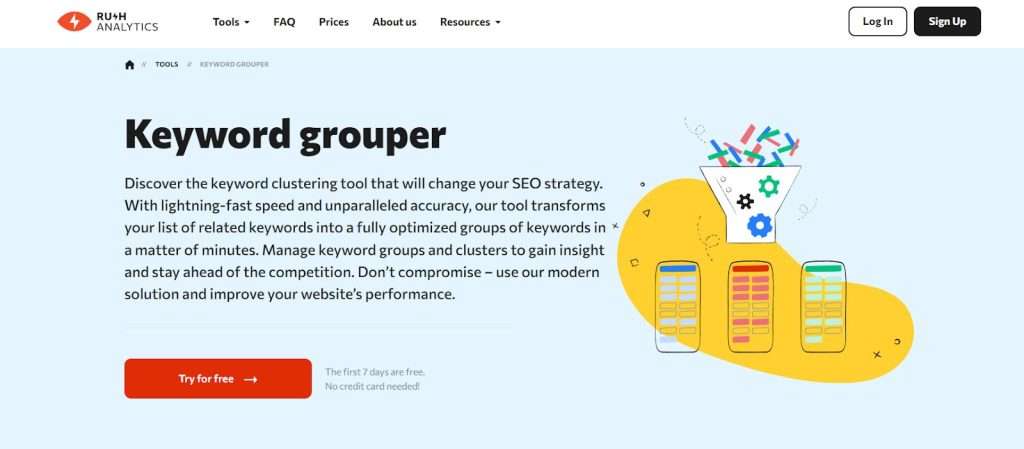
Incorporating semantic keywords naturally throughout content reinforces topical relevance and demonstrates comprehensive coverage. This helps search engines better understand content purpose while making writing more natural and informative.
Types of Keywords by Search Intent

Understanding search intent helps determine whether users are ready to buy, browsing, or learning, improving search result rankings.
Informational Keywords
Informational keywords are queries from people wanting to learn something. These searches typically begin with “how to,” “what is,” “why does,” or “when should,” indicating knowledge-seeking rather than product purchases.
Examples include “how to change tire,” “what is cryptocurrency,” or “why do plants need sunlight.” While having lower immediate conversion rates, they’re valuable for building trust and authority by capturing top-of-funnel users.
Creating comprehensive, helpful informational content establishes expertise and can guide users toward conversion through strategic calls-to-action. Users finding valuable answers are more likely to remember your brand for purchasing decisions.
How to Find Informational Keywords
Google’s “People Also Ask” box displays related questions users frequently search, providing question-based informational keyword clusters. Answer the Public and Answer Socrates generate hundreds of question-based keywords from single seed terms.

Keyword research tools with intent filters make finding informational keywords efficient. Semrush’s Keyword Magic Tool can filter by search intent. Rush Analytics offers similar functionality for discovering informational keyword opportunities.
Combine seed terms with question modifiers like “how to,” “what is,” “why does,” “when should,” “where can,” and “who needs” to generate informational keywords. Monitor Google Search Console for informational queries already driving traffic.
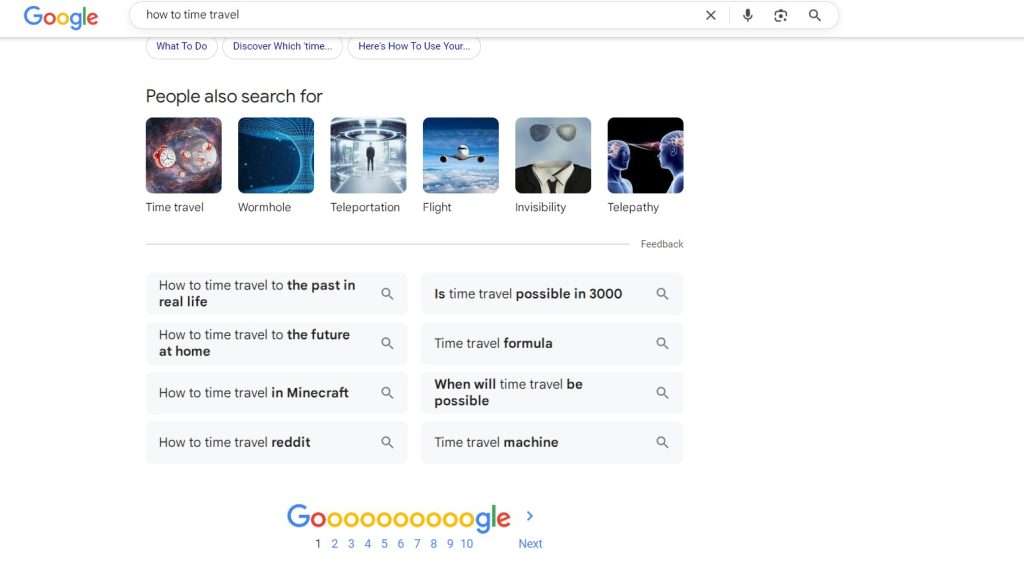
Navigational Keywords
Navigational keywords are used when searchers want specific websites or pages. These typically include brand names, website names, or specific page types like “login” or “contact.”
Examples include “Facebook login,” “Amazon customer service,” or “Nike official website.” Users searching these terms often have higher intent, already knowing your brand or product.
Optimizing for navigational keywords involves ensuring you have all pages people might search for when looking for your brand, including login pages, contact information, and support resources.
How to Find Navigational Keywords
Finding navigational keywords involves analyzing core brand terms, common misspellings, and product names. Check Google Analytics and internal site search data to see how people currently find your site.
Use keyword research tools to expand potential navigational keyword lists. Consider brand name variations with modifiers like “login,” “contact,” “support,” and “careers.”
Rush Analytics’ keyword research tools help identify branded keyword opportunities by showing search volumes for brand-related terms, helping prioritize which navigational keywords deserve optimization efforts.
Commercial Keywords
Commercial keywords are searches from people getting ready to purchase but needing more information before deciding. Common modifiers include “best,” “top,” “review,” “compare,” “vs,” and “alternative.”
Examples include “best project management software,” “iPhone vs Samsung comparison,” or “Shopify alternatives.” These keywords capture users actively researching options and comparing solutions.
Commercial keywords have higher conversion rates than informational keywords because they capture users who’ve identified their need and are evaluating solutions. Creating comprehensive comparison content positions your business as a top consideration.
How to Find Commercial Keywords
Discover commercial keywords by combining seed keywords with commercial modifiers signaling buying intent. Effective modifiers include “best,” “top,” “review,” “compare,” “vs,” “alternative,” and “recommended.”
Keyword research tools can filter by commercial intent. Rush Analytics provides filtering capabilities for identifying commercial keywords with strong search volume and reasonable competition levels.
Analyze competitors’ comparison pages and review content to understand which commercial terms drive traffic in your industry.
Transactional Keywords
Transactional keywords indicate users ready to complete actions like purchases. These high-intent keywords include “buy,” “order,” “purchase,” “discount,” “coupon,” “shop,” “get,” and “hire.”
Examples include “buy iPhone 15 Pro,” “order pizza delivery,” or “hire web designer.” These keywords are extremely valuable for conversion-focused SEO strategies as they represent bottom-of-funnel users.
Transactional keywords often trigger shopping results and ads in search engine results. Strategically distributing them throughout landing pages and product descriptions can significantly increase conversion rates.
How to Find Transactional Keywords
Find transactional keywords by combining products or services with buying-intent modifiers. Google’s autocomplete provides excellent suggestions when typing buying-related terms.
Price-related terms often indicate transactional intent: “price,” “cost,” “cheap,” “affordable,” “discount,” “coupon,” “deal,” and “sale.” Rush Analytics’ keyword clustering helps identify transactional keyword groups around specific products.
Consider seasonal and promotional transactional keywords aligning with business cycles, like “Black Friday deals” or “back to school supplies.”
Local/Geotargeted Keywords
Local keywords are specific to geographic locations, essential for businesses serving specific areas. They appear as location-specific terms with place names and “near me” searches relying on user location.
Examples include “chicken burgers near me New York” or “top shoe stores Paris.” Local searches make up significant portions of SEO traffic, with Google’s algorithms verifying local intent behind queries.
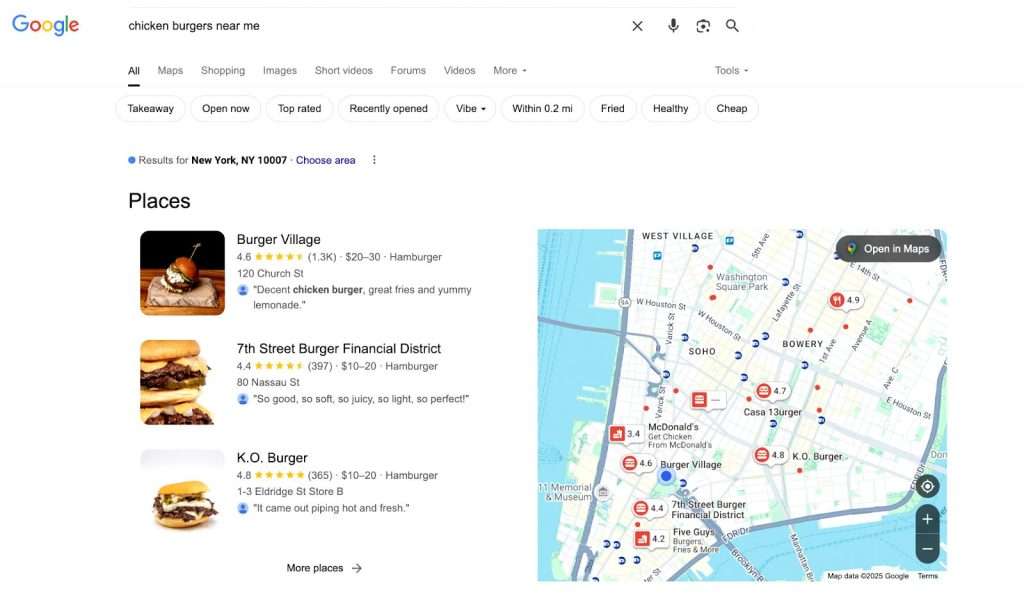
Local keywords trigger location-specific SERP features like map packs and business listings. They often have lower competition than national keywords while delivering higher conversion rates due to geographic relevance.
How to Find Geotargeted/Local Keywords
Discover local keywords by adding location modifiers to primary services or products. Start with main keywords and combine with city names, neighborhoods, regions, and local landmarks.
Use Google Business Profile insights and Search Console data to identify local keywords already driving traffic. Consider various geographic specificity levels from broad to specific.
Rush Analytics’ competitive analysis reveals local keyword opportunities while showing search volumes for specific geographic areas. Don’t forget “near me” keywords that have grown with mobile usage.
Additional Types of Keywords to Consider
Several specialized keyword types play important roles in modern SEO beyond primary categories.
Seed Keywords
Seed keywords form your keyword research foundation, representing core terms describing your business or content focus. While often highly competitive, their primary value is as starting points for discovering specific, less competitive opportunities.
Examples might include “digital marketing” for agencies, “running shoes” for retailers, or “project management” for software companies. Identify seed keywords by examining website navigation, product categories, and primary services offered.
Analyze competitors’ websites and Google Analytics data for additional seed keyword ideas. Rush Analytics’ competitive analysis tools help identify seed keywords successful competitors use as strategy foundations. Choose seed keywords accurately representing business focus and aligning with target audience needs.

The Keyword Suggestions tool from Rush Analytics efficiently identifies related terms, helping optimize content for search engines with precision.
Question-Based Keywords
Question-based keywords typically start with who, what, when, where, why, or how, representing natural language searches. Examples include “How does email marketing work?” or “What is the best CRM software?”
These keywords align with voice search trends and AI-powered search features. They’re usually long-tail keywords with lower competition, making them excellent opportunities for newer websites building topical authority.
Creating content optimized for question-based keywords involves FAQ sections, comprehensive guides, and how-to articles directly addressing user queries while improving user experience through clear, actionable answers.
Branded Keywords
Branded keywords mention specific brands, contrasting with generic keywords. Examples include “Nike Air Max,” “iPhone 15 Pro,” or “Rush Analytics keyword tool.” Users searching these terms often have higher intent, already knowing your brand or product.
Well-established companies may already rank for branded keywords identifiable through Google Search Console. Consider creating content around competitor-targeted branded keywords like “[Your Brand] vs [Competitor]” for defensive positioning.
Product-Related Keywords
Product-related keywords can be brand-specific or generic to product types. Examples range from generic “project management software” to specific “Asana project management.”
These keywords help capture users throughout the product journey from awareness to purchase intent. Create comprehensive product category pages, detailed comparisons, and feature-focused content addressing specific benefits and use cases.
Customer-Defining Keywords
Customer-defining keywords provide context about target audience characteristics including demographics and behaviors. Examples include “small business accounting software,” “fitness gear for seniors,” or “beginner photography courses.”
These keywords increase chances of reaching the right audience by including context about customer characteristics. Identify who needs your information most to find relevant customer-specific optimization keywords.
Market-Specific Keywords
Market-specific keywords focus on specific industries or business types. Examples include “healthcare technology,” “financial services,” or “e-commerce solutions.” These work best for main website pages rather than specific blog content due to their broad nature.
Generic Keywords
Generic keywords are short-tail, nondescript terms pointing to broad topics without mentioning specific brands. Examples include “shoes,” “software,” or “consulting.” They’re good for top-of-funnel content when searchers’ queries are less brand-specific.
Trendy Keywords
Trendy keywords relate to current trends or fads experiencing rapid popularity surges. Examples might include “ChatGPT tutorial” or “iOS 17 features.” While short-lived, they can provide significant traffic if targeted quickly with quality content.
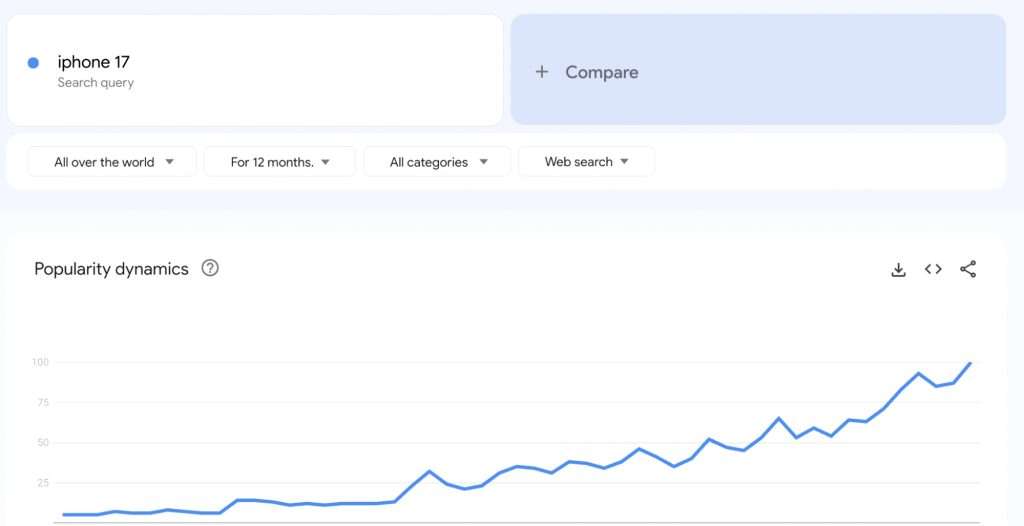
Evergreen Keywords
Evergreen keywords are searched consistently year-round with stable volumes. Examples include “how to lose weight,” “investment strategies,” or “project management tips.” They provide sustainable content strategy foundations and long-term SEO success.
How to Find Keywords By Target
Finding targeted keywords involves entering keywords reflecting desired topics with market, location, customer, or brand focus modifiers. Start with seed keywords and add specific targeting based on goals.
Keyword research tools make this efficient through bulk analysis and filtering options. Rush Analytics provides bulk analysis capabilities with keyword research and clustering tools for comprehensive targeting strategies.
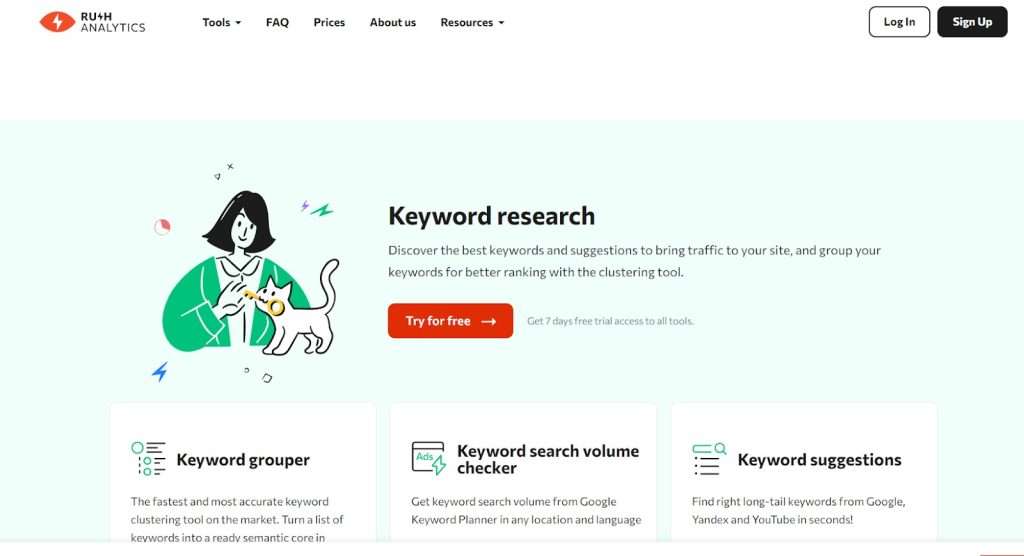
Consider multiple targeting approaches simultaneously, like combining customer-defining, product-related, and geographic targeting in single keyword strategies.
Free 7 days access to all tools. No credit card required!
Попробовать бесплатно
Choosing the Right SEO Keywords for Your Business
Selecting optimal keyword mixes requires balancing business goals, audience needs, competitive landscape, and available resources. Modern SEO success depends more on addressing user intent than optimizing for exact matches.
Align keyword selection with specific business objectives. Prioritize transactional and commercial keywords for conversions, informational keywords for awareness, and geographic keywords for local businesses.
The most effective strategies combine multiple keyword types capturing users throughout customer journeys. Rush Analytics’ comprehensive tools help identify opportunities across categories while providing competitive analysis for realistic targeting based on current domain authority.
FAQs
How many types of keywords are there?
There are numerous classification systems including length-based types (short-tail, medium-tail, long-tail), role-based types (primary, secondary, semantic), intent-based types (informational, navigational, commercial, transactional), and target-based types. Each serves different strategic purposes in comprehensive SEO planning.What are the 4 keyword match types?
In paid advertising, four match types are broad, phrase, exact, and negative match. In organic SEO, focus on search intent categories: informational, navigational, commercial, and transactional, which guide content creation strategies.What are the 4 types of keyword intent?
Four primary intent types are informational (seeking knowledge), navigational (finding specific websites), commercial (researching purchases), and transactional (ready to buy). Understanding intent helps create content matching user needs.What are examples of keywords?
Keywords range from short-tail “shoes” to long-tail “best waterproof hiking boots for women.” They can be informational (“how to tie shoes”), commercial (“best running shoes 2025”), transactional (“buy Nike Air Max”), or navigational (“Nike official website”).


